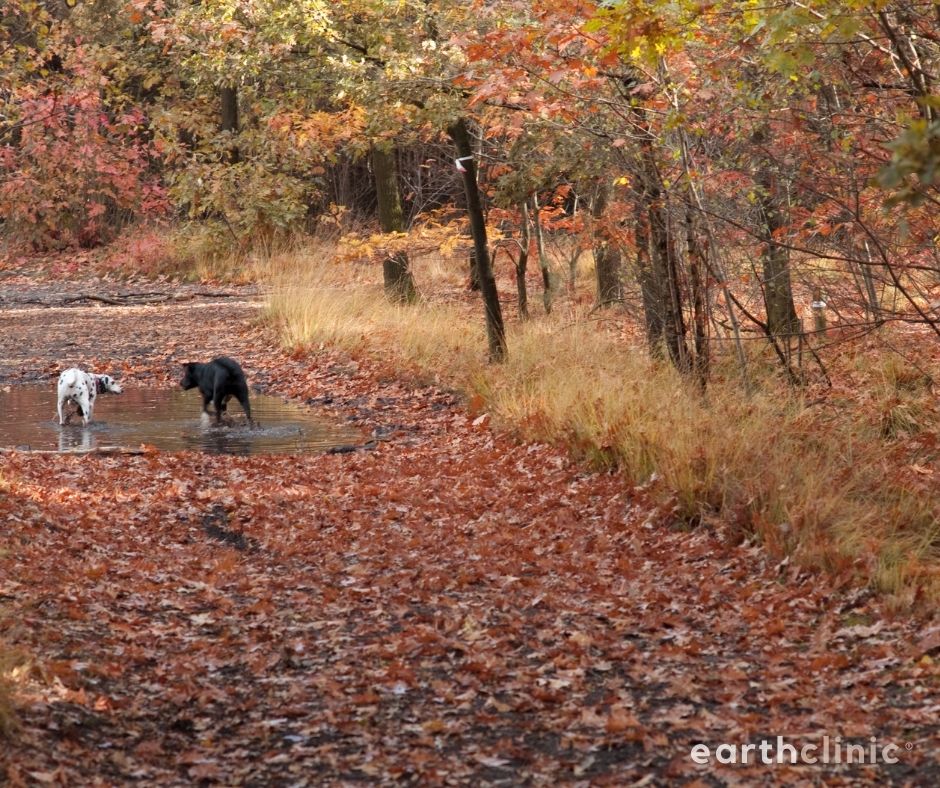
Leptospirosis in dogs, or Lepto as it is also known, is an infectious disease caused by bacteria in the genus Leptospira. This organism is a spirochete bacteria and is found throughout the world.
This is a very serious condition where liver disease and renal failure may occur if not treated promptly by a qualified vet familiar with this condition.
Leptospira is found in standing water, dampness, and also in mud. Many cases happen in late summer and fall, and after heavy rainfall
How Do Dogs Get Leptospirosis?
Dogs become infected with Leptospirosis by drinking contaminated water from puddles or by swimming in stagnant water. They can also get it through contact with urine of infected animals. Skunks, rats, feral cats, raccoons, dogs and other animals can carry this bacteria.
Not all dogs that have been exposed to Leptos become visibly ill.
In one study, 25% of unvaccinated, healthy dogs had antibodies to Leptospirosis. Researchers surmised that dogs had previously been exposed to Leptospirosis without their owners noticing any symptoms.
When Leptospirosis does cause disease in dogs, it generally tends to be most severe in unvaccinated puppies under the age of 6 months.
How Long Does It Take For Dogs to Show Symptoms of Leptospirosis?
It takes about 4-12 days after exposure for a dog to start to feel unwell and show symptoms. Signs vary, but often include poor appetite, lethargy, vomiting, fever, increased thirst and/or increased urine.
Here is a full list of symptoms to watch out for:
-
lethargy
-
vomiting
-
abdominal pain
-
muscle pain
-
muscle stiffness or weakness
-
trembling
-
polyuria (excessive or abnormally large amounts of urine)
-
oliguria (abnormally small production of urine)
-
anuria (failure of the kidneys to produce urine)
-
anorexia
-
vasculitis
Leptospirosis Treatment in Dogs
Diagnosis is made through urine and blood tests specifically for Leptospirosis. Once diagnosied, antibiotics are typically used to treat an active infection of Leptospirosis.
Because this condition is so serious, it should be diagnosed and treated at your vet as soon as possible.
Your vet may also treat your dog with fluids and other procedures to maintain electrolytes and normal fluid balance.
How Do You Prevent Leptospirosis in Dogs?
Since contaminated water is the cause of Lepto, prevention is accomplished by stopping your dog’s access to it. Also, make sure not to have any food or garbage outside that might attract rodents, feral cats, and raccoons.
Vaccination for Leptospirosis is usually only recommended if your dog is at high risk of contracting the disease. Unfortunately, the efficacy of the leptso vaccine is short-lasting and limited.
Also, people have reported side effects from the vaccine in their dogs that are quite severe.
Continue reading below to learn from Earth Clinic readers about they learned from this condition. If you have any experience with it, please share your feedback with us!
Related Links:
Side Effects of Pet Vaccines: A Closer Look
Treating Side Effects of Rabies Vaccine in Dogs



